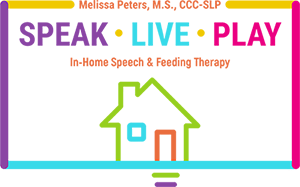Techniques for Pediatric Feeding Therapy
If you’re a parent struggling to get your child to eat, don’t worry – it’s more common than you might think. Many kids go through a phase where they become picky eaters as they grow up, and it’s essential to help them develop healthy eating habits. While giving in to their cravings for pizza and ice cream might be tempting, overeating those foods can affect their growth incorrectly. Feeding therapy can be beneficial in teaching kids how to eat well. Keep encouraging them to try new foods and make mealtimes fun and upbeat!
Feeding therapy can be a game-changer if you’re worried about your child’s eating habits. It’s a unique way of helping kids learn to eat healthy and enjoy different foods. This guide will explore what feeding therapy is all about and how it works. We’ll also check out four excellent techniques doctors use in feeding therapy. Give them a try today!
Understanding Feeding Therapy
Feeding therapy involves techniques designed to help children develop better eating habits. Professionals like occupational therapists and speech pathologists often administer these therapies, with dieticians and nutritionists playing a crucial role in providing direct treatment and methods to manage children’s weight and growth.
Feeding therapy sessions usually occur weekly, lasting around 30 to 60 minutes. These sessions focus on teaching children how to eat new foods and address any challenges they might be facing in the eating process.
How Pediatric Feeding Therapy Helps Your Child
One highly recommended feeding therapy technique is SOS Feeding Therapy. This method mainly benefits children with special needs or those facing medical challenges. It takes a playful approach, addressing motor skills and emotional regulation, fostering a positive relationship between your child and healthy eating.
Is Feeding Therapy Right for Picky Eaters?
Picky eaters with specific food preferences might not always require feeding therapy. However, extreme cases where a child’s diet is severely limited may benefit from this approach. Suppose your child shows signs of stress or resistance when presented with new foods. In that case, feeding therapy can help alleviate these challenges.
Can Feeding Therapy Be Used for Toddlers?
Feeding challenges can emerge early in a child’s life. If you notice your toddler struggling with eating milestones, it’s essential to be patient and observe their progress. Feeding therapy for toddlers becomes crucial if they continue to exhibit difficulties beyond certain developmental stages, such as sticking to baby food or facing challenges with chewing.
While picky eating habits are regular, if they get out of control, considering feeding therapy is a proactive step. Starting with pediatric feeding strategies at home, alongside a pediatrician’s evaluation, can provide additional support.
Pediatric Feeding Therapy Approaches You Can Explore
Feeding therapists utilize various approaches to address eating challenges in children. Two primary categories include:
Child-Directed Approach
This approach includes active involvement from parents and caregivers. It aims to understand why a child has trouble eating, like if they had bad experiences with certain foods. While it may take longer, using a child-directed approach helps with the feeding therapy by dealing with the real problems.
 Behavioral Pattern Approach
Behavioral Pattern Approach
A method that many people use to help children try new foods is called the “behavioral pattern” approach. This method employs incentives to inspire children to explore unfamiliar foods. Eventually, the rewards disappear, and kids can eat independently and without stress. This method is suitable for kids with no significant problems with eating. It’s a kind of feeding therapy that can help!
Strategies and Techniques for Home
Supporting your child at home is crucial for reinforcing feeding therapy techniques. Here are some simple yet effective strategies:
1. Remain Calm and Respectful:
– Connect with your child by talking and playing games to put them at ease.
– Be patient and supportive, avoiding frustration.
– Never force a child to eat; let them know it’s okay to spit out food they don’t like.
2. Routine Establishment:
– Create a routine for mealtime activities, fostering familiarity.
– Use visual aids to guide them through activities like handwashing.
– Introduce new vocabulary around food, encouraging thorough chewing and biting.
3. Tap Into Your Imagination:
– Play with food to make learning about it enjoyable.
– Use all five senses to describe food and encourage exploration.
– Be creative with meal presentations, creating positive associations.
4. Get Creative With Your Food Presentation:
– Allow your child to help prepare and serve their food.
– Use divided plates to separate different food items.
– Give dishes funny names and offer various dipping options to make eating exciting.
5. Make a Mess and Have Fun:
– Let your child make a mess; avoid cleaning until the end of the meal.
– Create a stress-free atmosphere, allowing them to spit out unwanted food.
– Provide an “exit strategy” like a designated bowl for disliked items.
Implementing these strategies at home, coupled with professional evaluation and therapy, can make eating a positive and enjoyable experience for your child. Feeding therapy techniques are designed to address aversions gently and effectively, helping your child develop healthy eating habits for life.
If you have concerns about your child’s feeding habits, reach out to Speak Live Play to explore how pediatric feeding therapy can positively impact their journey toward becoming healthy eaters. Schedule an appointment with us today!





 Behavioral Pattern Approach
Behavioral Pattern Approach

